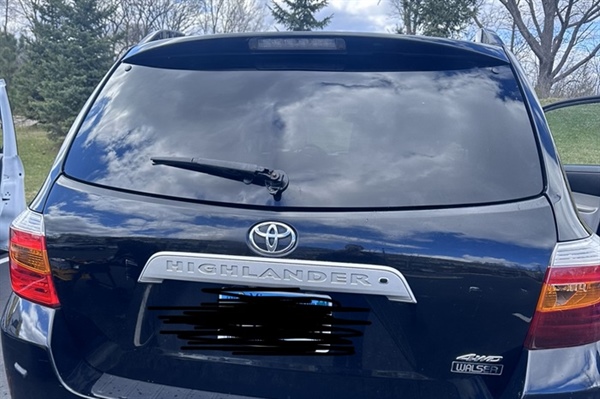What are the Benefits of OEM vs. Aftermarket Auto Glass?

Deciding between Original Equipment Manufacturer (OEM) and aftermarket auto glass involves more than comparing price tags.
OEM glass is designed to match your vehicle’s original windshield exactly, providing a precise fit and a factory-quality finish. Aftermarket glass, while often more affordable, can vary in thickness, edge shape, and clarity—differences that may impact installation, durability, and overall performance. In a climate like Minnesota’s, where extreme temperatures and flying road debris are common, those details matter for both safety and long-term structural reliability. Choosing auto glass replacement means considering not just cost, but quality and compatibility.
This guide breaks down five key questions to help you make an informed decision. Backed by insights from Kingdom Auto Glass and real-world examples, you'll gain the clarity you need to choose the right glass for your vehicle—confidently and accurately.
Precise Fit and Superior Finish: OEM vs Aftermarket Auto Glass
OEM auto glass is produced using the same molds and tooling as the original windshield, ensuring exact dimensional tolerances.
This factory-matched fit minimizes gaps, prevents wind noise and water leaks, and maintains the vehicle’s designed stress distribution. Aftermarket glass often relies on generic molds, which can result in slight variances in edge contour and curvature that require installers to shim or adjust to achieve a secure seal.
The surface finish on OEM glass also matches the original optical standards. The lamination process and edge grinding are calibrated to the automaker’s specifications, delivering consistent glass thickness and clarity. Aftermarket panels may exhibit minor distortions or variations in tint and coating uniformity, which can affect driver vision, glare resistance, and even defogging performance.
When you choose auto glass replacement with OEM-grade components, you preserve the original design fit and factory finish, maintaining both safety and aesthetics.
Cost Comparison: OEM vs Aftermarket Auto Glass
OEM glass typically carries a higher upfront price due to manufacturer licensing fees, mold maintenance, and quality control.
Retail pricing for a single OEM windshield can be 20–30% above comparable aftermarket units. Labor costs may also rise when fitting OEM glass, as technicians follow precise protocols to ensure adhesion and seal integrity.
Aftermarket glass is often 30–50% less expensive at purchase. Savings stem from generic mold production and reduced certification overhead. However, installers may require extra time to adjust the fit and refine edges, which can offset part of the material savings. In some cases, mismatched curvature leads to water intrusion or wind noise, creating the potential for repeat visits and additional service fees.
Long-term cost considerations include potential warranty claims, repeat labor, and impact on vehicle value. While aftermarket glass may lower initial expenses, the total cost of ownership ultimately depends on the quality of the installation and the material's performance over time.
Warranty Coverage Differences Between OEM and Aftermarket Auto Glass
OEM auto glass warranties are backed by the vehicle manufacturer or an authorized glass partner, often offering multi-year coverage against defects in lamination, seal failure, and edge delamination. These warranties may be transferable to subsequent owners, protecting the vehicle’s lifespan.
Aftermarket glass warranties vary depending on the supplier and installer. They frequently cover only edge seal issues or delamination for a limited period (e.g., one year). Coverage for optical distortion or coating failure may be excluded. Warranty validity can also hinge on installation by a certified technician and adherence to specific curing and calibration procedures.
Understanding the fine print is essential: OEM warranties tend to be more comprehensive and reliable, whereas aftermarket policies may impose restrictions that limit recourse in the event of problems.
Long-Term Durability: OEM vs Aftermarket Auto Glass Options
OEM laminated windshields use standardized interlayers (such as PVB or ionoplast) and factory-controlled curing processes that produce uniform bonding and UV resistance. This consistency helps prevent delamination, discoloration, and micro-cracking over years of thermal cycling and road vibration.
Aftermarket glass can employ different interlayer formulations or lamination pressures, which may affect its durability. Variations in PVB thickness or curing temperature may lead to premature haze, discoloration, or edge separation, especially under extreme temperature swings common in Minnesota.
Studies show that OEM glass maintains structural integrity longer in freeze-thaw conditions, reducing the risk of spontaneous cracks. While premium aftermarket options approach OEM performance, quality control remains more variable across suppliers.
Impact of OEM Auto Glass on Vehicle Resale Value in Minnesota
Vehicles retaining their original equipment manufacturer (OEM) glass often command higher appraisal values.
Auto-buying guidelines recognize factory-specified components as evidence of proper maintenance and structural integrity. A windshield matching the vehicle’s original specification signals to buyers that repairs adhered to manufacturer standards.
In Minnesota’s market—where harsh winters and road salt accelerate glass wear—OEM replacements reassure prospective buyers that the vehicle endured repairs suited for local conditions. Appraisers may deduct less for OEM-replaced glass compared to aftermarket installations, which can raise questions about fit and durability.
Partnering with local experts for OEM replacements helps protect resale value by preserving the authenticity of original equipment and meeting regional durability requirements.
How Kingdom Auto Glass Can Support Your Auto Glass Needs
Kingdom Auto Glass combines factory-grade OEM materials with certified mobile installation to maintain your vehicle’s design integrity and safety. Our technicians follow automaker guidelines for adhesion, calibration, and seal curing, minimizing future leaks, noise, and distortion.
We offer same-day service across the Twin Cities metro. Reach our team at 651-440-2213 to schedule your appointment or request emergency repairs. For detailed service options, please contact us today.